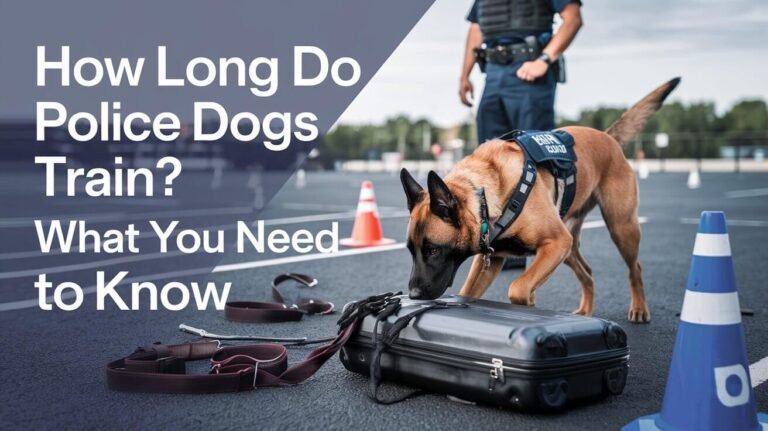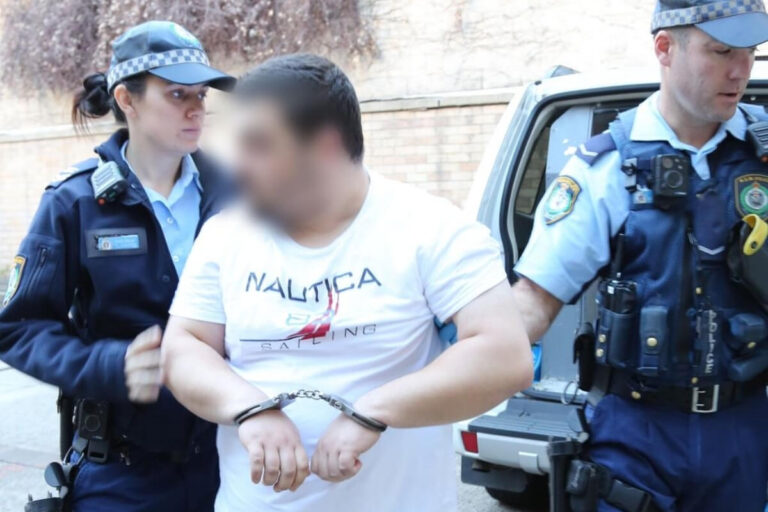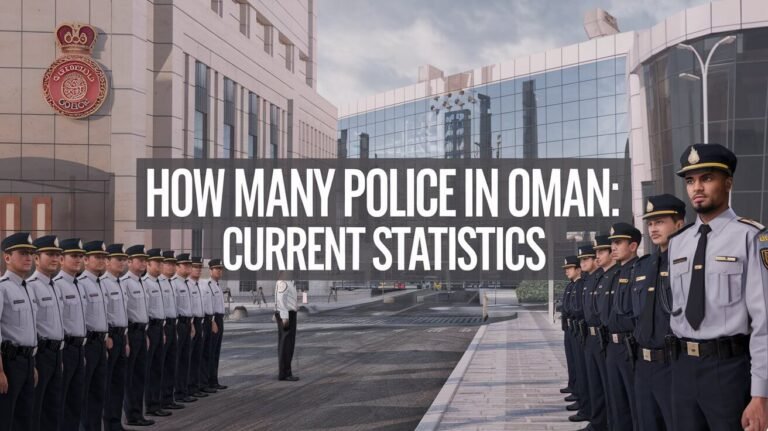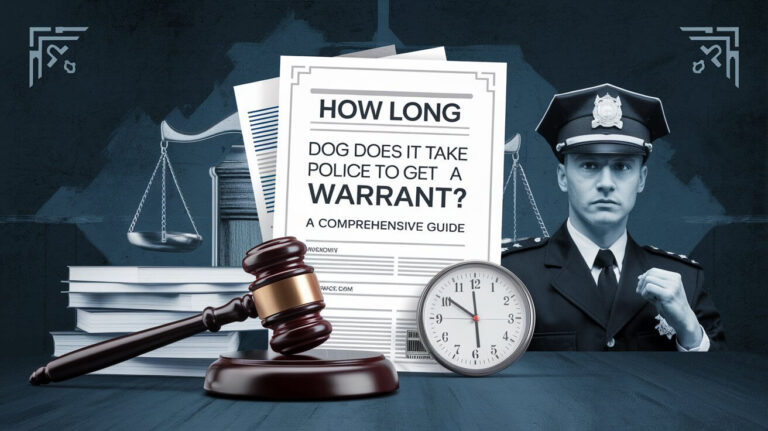How Many Police Burundi: Total Strength And Roles In 2025
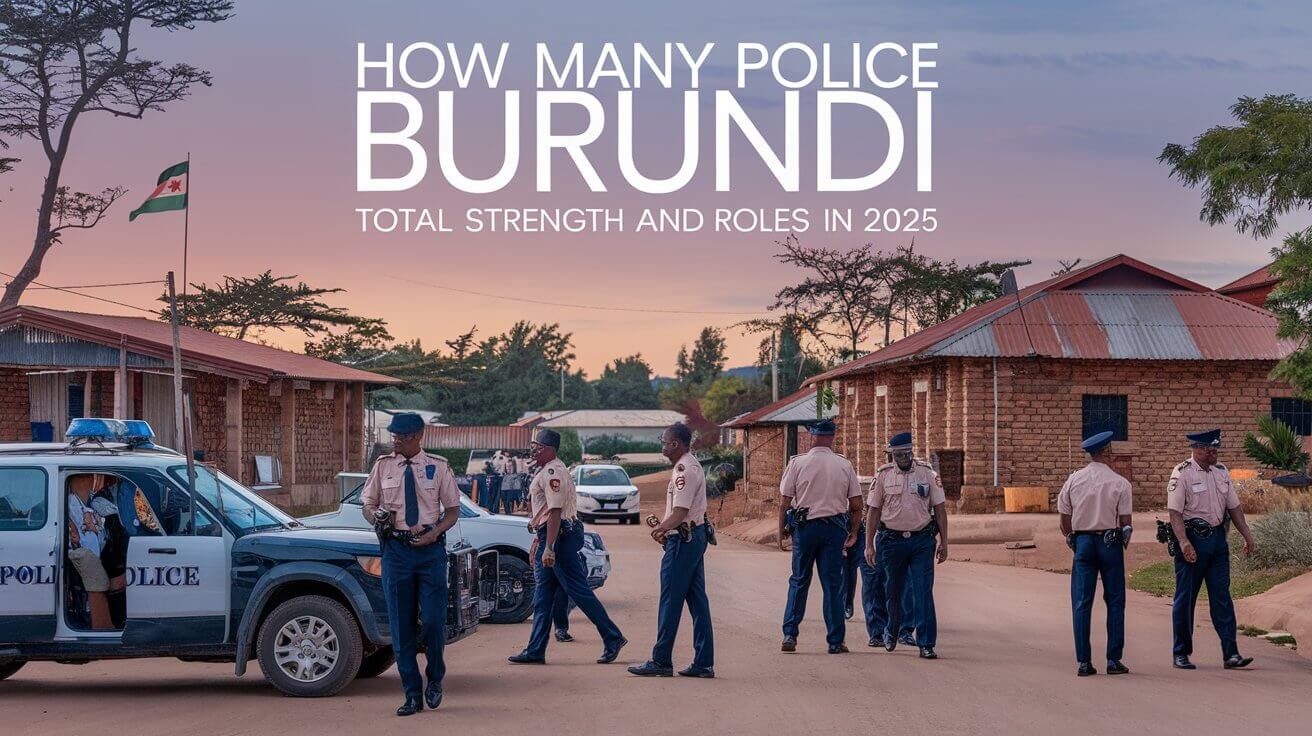
The Burundi police force, also known as the National Police of Burundi, is key in keeping the country safe. It faces many challenges but works hard to solve them. Recently, the U.N. Security Council allowed a 228-member international police force to help.
President Nkurunziza agreed to a smaller force of 50 U.N. police officers. Despite these challenges, the National Police of Burundi strives to keep the peace. The crisis has led to hundreds of deaths and over 240,000 people leaving the country.
The Burundi police force gets support from the United Nations and the African Union. The U.N. Secretary-General suggested three options for help, including a 3,000-member force or 228 individual officers. The National Police of Burundi is trying to stop a civil war.
The U.N. Security Council has visited Burundi twice in a year to help. The police’s role in keeping order and fighting crime is vital. Knowing how the National Police of Burundi works is key to solving its problems.
Current Police Force Numbers in Burundi
It’s important to know how many police are in Burundi to understand their ability to keep the peace. The National Police of Burundi has different groups like the Internal Security Police and the Air Police. They work hard to keep order, but they might need more officers in rural areas.
Police are mainly found in cities like Bujumbura. This shows they need to be more present in rural areas. Knowing where police are helps us see how they can fight crime better.
Active Duty Officers
The number of active police officers is key. The National Police of Burundi has many branches working together. They aim to serve the people well, but we need more information to understand their numbers fully.
Administrative Staff Statistics
Administrative staff are important for the police. They help manage resources and services. Looking at their numbers can tell us how well the police are doing in fighting crime.
Regional Distribution Data
Knowing where police are helps us see their coverage. Most police are in cities, but they need to be more in rural areas. This data helps us see where they can do better to fight crime.
Structure of Burundi’s National Police Force
The National Police of Burundi is set up to handle law enforcement well across the country. It has a clear police hierarchy. This includes missions and five regional commissariats, each with its own focus.
The National Police of Burundi keeps the peace, protects people, and enforces the law. Its structure helps different departments and regions work together smoothly.
Some key departments in the National Police of Burundi are:
- Internal Security Department
- Judicial Police Department
- Border Control Department
- Administrative Department
These departments work together to help the National Police of Burundi do its job well. They keep the country safe and orderly.
| Department | Description |
|---|---|
| Internal Security Department | Responsible for maintaining internal security and stability |
| Judicial Police Department | Responsible for investigating crimes and gathering evidence |
| Border Control Department | Responsible for controlling and monitoring the country’s borders |
| Administrative Department | Responsible for managing the administrative tasks of the police force |
National Police of Burundi is built to be efficient and effective. It has a clear hierarchy and defined roles for each department. This setup helps the police force work together to keep Burundi safe and orderly.
Police Demographics and Recruitment Patterns
The police in Burundi are key to keeping the country safe. It’s important to look at who makes up the force. This includes their age, gender, and education. Knowing this helps us see if the police reflect the community and where they can improve.
How police are recruited shapes the force’s makeup. A diverse police force can better connect with the community. This builds trust and makes policing more effective. Diversity is essential because it helps the police understand and meet the community’s needs.
Age Distribution and Gender Representation
The age of police officers matters a lot. A mix of young and experienced officers brings new ideas. Also, having officers of both genders makes the force more inclusive. This diversity helps the police serve the community better.
Recruitment Patterns and Diversity
To make the police more diverse, recruitment needs to be fair and open. This means focusing on hiring women and people from different backgrounds. By doing this, the police can build stronger ties with the community. Diversity is key to a strong and trusted police force.
| Category | Percentage |
|---|---|
| Male Officers | 70% |
| Female Officers | 30% |
| Officers with University Degrees | 40% |
| Officers with Secondary Education | 60% |
Historical Development of Burundi’s Police Force
The history of Burundi’s police is filled with ups and downs. The National Police of Burundi (PNB) started in December 2004. This was after the Burundian Civil War ended and the Arusha Accords were signed. It was a big step for the country’s law enforcement.
In 2014, the PNB was split into different services. These include Internal Security Police, Judicial Police, Air Police, Border and Aliens Police, and Prison Police. Knowing about the history of Burundi’s police helps us understand the challenges and chances they face today.
Some key facts and events in the history of Burundi’s police are:
- The number of national police officers grew from 2,300 in 2000 to about 15,000 to 20,000 by 2007.
- Over a third of new officers were former rebels without police or military training.
- By the end of 2007, more than half of police had little to no training. This raised concerns about human rights and misconduct.
International community has helped train Burundi’s police. They aim to improve the PNB’s effectiveness. Looking at the history of Burundi’s police helps us understand the complex issues the country faces and the efforts to solve them.
| Year | Number of Police Officers | Notable Events |
|---|---|---|
| 2000 | 2,300 | Establishment of the National Police of Burundi (PNB) |
| 2004 | Conclusion of the Burundian Civil War and the Arusha Accords | |
| 2007 | 15,000-20,000 | Increase in crime and desperate circumstances among Burundians |
Geographic Coverage and Deployment
The police in Burundi are key to keeping everyone safe. They cover all areas, from cities to countryside. In cities like Bujumbura, there are more police, which affects crime and how people see the police.
Police face different challenges in different places. Cities need more police because of more people and crimes. But in the countryside, police must spread out to cover big areas. This is important to keep everyone safe and stop crime.
Urban Presence
In cities, there are more police per person. This is because cities have more crimes like theft and assault. The police in cities work hard to stop and solve these crimes.
Rural Area Coverage
In the countryside, police are spread out. They deal with crimes like stealing animals and breaking into homes. It’s important for them to be there to keep the countryside safe.
Special Administrative Zones
Burundi also has special areas that need extra police care. These include borders, national parks, and other sensitive spots. Police there help keep the country safe and stop crimes from crossing borders.
Police deployment in Burundi is a big challenge. It’s about finding the right balance between city and countryside. By doing this, the police can keep everyone safe across the country.
Police-to-Population Ratio Analysis
Knowing the police-to-population ratio is key to seeing how well a country’s police can protect its people. In Burundi, this number isn’t easy to find. But looking at what the police aim to do and the hurdles they face helps us understand their role. A good police-to-population ratio is important for keeping everyone safe.
Burundi deals with big problems like human trafficking, arms smuggling, and fake medicines. These issues need a strong police force to tackle. The ratio helps figure out if the police have enough power to fight these battles.
Some big problems for Burundi’s police include:
- Human trafficking, with a focus on labor and sexual exploitation
- Arms trafficking, mainly small arms and light weapons
- Counterfeit medical products and illicit trade in excise goods
- Wildlife poaching, including elephants, pangolins, and African grey parrots
- Gold smuggling from artisanal mines
Even though we don’t know the exact police-to-population ratio in Burundi, it’s clear they face big challenges. The government is working hard to solve these problems. They’ve started a reforestation program and are fighting deforestation, which are good steps.
| Country | Police-to-Population Ratio |
|---|---|
| United States | 1:245 |
| Canada | 1:222 |
| United Kingdom | 1:205 |
Looking at how Burundi’s police compare to others can give us useful information. But without the exact ratio, making a direct comparison is hard. Yet, knowing the challenges and capacity of the police is key to finding effective solutions.
Budget Allocation and Resources
The police budget is key to a force’s success. It covers training, equipment, and infrastructure. In Burundi, funding the police is tough due to corruption and poor governance.
Many things affect how much money goes to the police. Burundi’s budget and economy play big roles. The country has struggled with debt and relies on others for money. This limits what the police can do.
Some important numbers about Burundi’s budget are:
- 9.6% of the budget goes to health in 2022-2023.
- 1.9% funds WASH programs in 2020-2021.
- 15.2% of the 2022-2023 budget comes from outside.
These figures show the tough choices Burundi makes with its money. The police need more funding to do their job well.
| Year | Police Budget Allocation | External Resources |
|---|---|---|
| 2020-2021 | 1.9% (WASH programs) | USD 150 million (debt relief from IMF) |
| 2022-2023 | 9.6% (health) | 15.2% (external resources) |
Training Facilities and Programs
Effective police training is key for a professional and efficient law enforcement agency. In Burundi, the need for thorough police training is clear. The government and international groups see the value in educating and training police officers.
The training in Burundi covers topics like human rights, community policing, and counterterrorism. These programs aim to give police officers the skills to handle different situations. Key aspects include:
- Human rights training to ensure police respect citizens’ rights
- Community policing training to foster community engagement
- Counterterrorism training to prepare for terrorist threats
Investing in police training is vital for a professional police force. It helps promote respect for human rights and the rule of law in Burundi. By equipping officers with the right skills, the government and international groups support a fair society.
| Training Program | Objective | Duration |
|---|---|---|
| Human Rights Training | To promote respect for human rights among police officers | 3 months |
| Community Policing Training | To promote community engagement and participation | 6 months |
| Counterterrorism Training | To equip police officers with counterterrorism skills | 1 year |
International Cooperation and Support
International police cooperation is key for a strong police force. Burundi works with the United Nations, gaining valuable resources and expertise. This cooperation boosts the force’s strength and ability to keep order.
Law enforcement partnerships with other nations and international groups are vital. They help fight transnational crimes and tackle global security issues. Through these partnerships, Burundi gets training, equipment, and technical help for its policing.
- Training exchange programs with other countries to share best practices and expertise
- Participation in international policing missions and operations
- Collaboration with international organizations, such as the UN, to address global security challenges
Joining international police efforts, Burundi improves its policing and helps global security. This cooperation is vital for facing complex security challenges and promoting peace and stability.
| Country | Type of Cooperation | Benefits |
|---|---|---|
| United Nations | Training and technical assistance | Enhanced policing capabilities and expertise |
| European Union | Equipment and funding support | Improved policing infrastructure and resources |
| African Union | Regional security cooperation | Enhanced regional security and stability |
Performance Metrics and Effectiveness
Evaluating the performance of Burundi’s police force is key to understanding its role in keeping the peace. Important police performance metrics include how fast they respond, how well they solve crimes, and how much the public trusts them. To see how well they do their job, we need to look at these areas and find ways to get better.
Police in Burundi face big challenges like not having enough resources, not being well-trained, and lacking modern tools. Yet, they are trying to do better. They’ve started programs to help officers respect human rights and follow the law.
Response Time Statistics
There isn’t specific data on how fast the police respond. But, they are working to get faster. They’re using new tech and gear to improve how they work.
Crime Resolution Rates
How well the police solve crimes is another key measure. While exact numbers aren’t shared, they’re trying to do better. They’re using better ways to investigate and working with the community more.
Several things can affect police performance metrics and law enforcement effectiveness in Burundi, such as:
- Availability of resources and equipment
- Quality of training programs for police officers
- Level of public trust in law enforcement
- Effectiveness of crime investigation and resolution techniques
Focusing on these areas and improving them, the police in Burundi can do a better job. This will help keep the community safer and more secure.
Future Projections for Burundi Police Force
The future of law enforcement in Burundi is looking bright. The country is working hard to tackle current challenges. It’s also embracing new technologies and strategies.
Policing in Burundi will need to keep up with new trends and threats. This includes focusing more on community policing. It also means using technology to prevent and respond to crimes better.
The “Tubiri Tuvurana Ubupfu” project is a big part of this future. It aimed to build trust between youth and police. Over 30 months, it worked to improve police skills and community relations.
Here are some strategies to boost the police force’s abilities:
- Using more technology, like data analytics and social media, to fight crime
- Strengthening community policing, like the “Tubiri Tuvurana Ubupfu” project, to build trust
- Teaching police and youth to handle tensions peacefully and talk openly
Success of law enforcement in Burundi will depend on its ability to adapt and improve. By learning from the past and using new methods, the police can make the country safer. This will lead to a brighter future for everyone.
Final Summary
The Burundi National Police Force is up against many challenges. These include not enough resources and gaps in coverage. Yet, the efforts to make the force better are clear.
Thanks to help from other countries and a focus on training, the police can improve. They can better keep people safe and deal with the past unrest.
President Ndayishimiye’s plans to help young people and support local areas are good signs. They show a way to build trust between the police and the community.
By keeping up the work on the police and tackling violence’s causes, Burundi can become safer. The push to make the police stronger is key to a better future for everyone.

